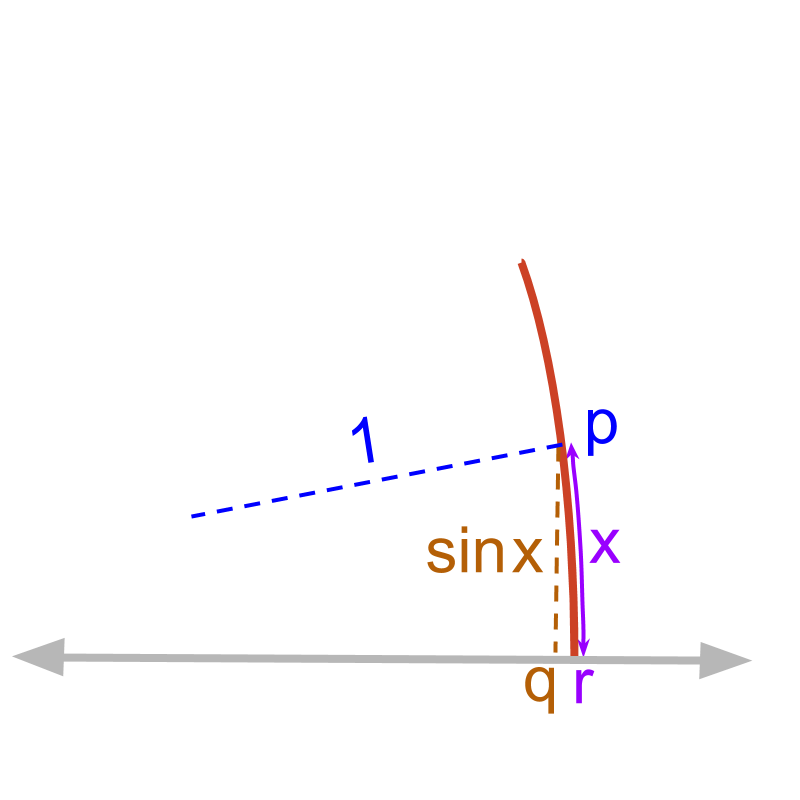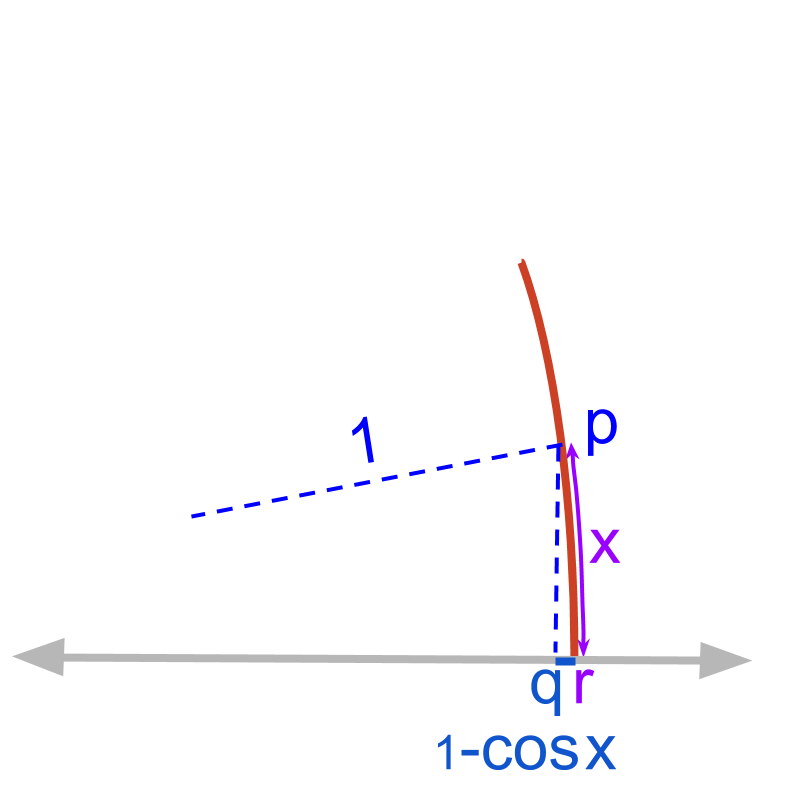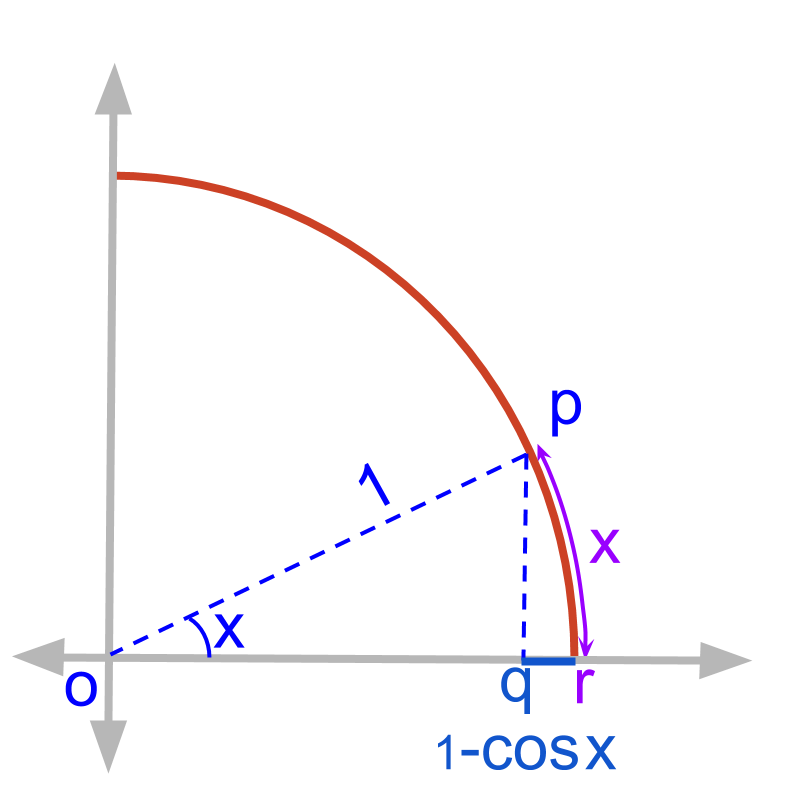
what you'll learn...
Limit of Trigonometric Functions
 chord length equals arc length for tiny angles
chord length equals arc length for tiny angles » limx→0sinxx=1limx→0sinxx=1
» limx→0arcsinxx=1limx→0arcsinxx=1
 chord distance equals 0 compared to arch length for tiny angles
chord distance equals 0 compared to arch length for tiny angles» limx→01-cosxx=0limx→01−cosxx=0
Limit of Logarithmic Functions
this part is not explained in detail owing to the limited time. If you would like this topic, feel free to drop in an email. » limx→0ln(1+x)x=1limx→0ln(1+x)x=1
» limx→0ax-1x=ln(a)limx→0ax−1x=ln(a)
Limit of Exponential Functions
this part is not explained in detail owing to the limited time. If you would like this topic, feel free to drop in an email. » limx→∞(1+ax)x=ealimx→∞(1+ax)x=ea
» limx→0ex-1x=1
» limx→∞ax=(∞ifa>1), and (0ifa<1)
» limx→0(1+x)n-1x=n
» limx→0sin-1xx=1
problem
How to find the expected value for f(x)=sinxx at x=0?
When a function evaluates to 00 at an input value, the common factors of the numerator and denominators are canceled to calculate the limit of the function at the input value. That works only if the numerator and denominator are polynomials.
When one of the numerator or denominator is a trigonometric function, how to compute the limits?
multiple solutions
There are multiple proofs for limx→0sinxx=1.
• Substitute series expansion
sinx=x-x33!+x55!+⋯
• Geometrically prove that
cosx<sinxx<1
• Use the L'hospital's rule to differentiate numerator and denominator
In this, an intuitive understanding (not a proof) is given.
to understand

Consider the unit circle with angle x radians.
Length of line segment qp=sinx
length of arc rp = x
The ratio sinxx=length(qp)length(rp)

As x→0, the figure is zoomed in to the part qp and rp.
As x is getting closer to 0, the length of arc rp equals the length of line qp.
For very small values of x
sinx=x
Limit of sin(x)/x:
limx→0sinxx=1
problem and solutions
There are multiple proofs for limx→01-cosxx=0.
• Substitute series expansion
cosx=1-x22!+x44!+⋯
• Use the equality
1-cosx=2sin2(x2)
and use the previous result for sinxx
• Use the L'hospital's rule to differentiate numerator and denominator
In this, an intuitive understanding (not proof) is given.
to understand

Consider the unit circle with angle x radians. The length of line segment qr = 1-cosx
length of arc rp = x
The ratio 1-cosxx=length(qr)length(rp)

As x→0, the figure is zoomed in to the part qr and rp.
As x is getting closer to 0, the length of qr becomes 0 faster than the length of arc rp
For very small values of x, x is far greater than 1-cosx.
x>(1-cosx)≅0
Limit of (1-cos(x))/x:
limx→01-cosxx=0
example
What is limx→0tanxx?
The answer is '1'
limx→0tanxx
=limx→0sinxx×1cosx
=1×1
some results
Limit of Logarithmic Functions:
limx→0ln(1+x)x=1
limx→0ax-1x=lna
summary
Limit of Exponential Functions:
limx→∞(1+ax)x=ea
limx→0ex-1x=1
limx→∞ax=(∞ifa>1),and(0ifa<1)
limx→0(1+x)n-1x=n
limx→0sin-1xx=1
Outline
The outline of material to learn "limits (calculus)" is as follows.
Note : click here for detailed outline of Limits(Calculus).
→ Indeterminate and Undefined
→ Indeterminate value in Functions
→ Expected Value
→ Continuity
→ Definition by Limits
→ Geometrical Explanation for Limits
→ Limit with Numerator and Denominator
→ Limits of Ratios - Examples
→ L'hospital Rule
→ Examining a function
→ Algebra of Limits
→ Limit of a Polynomial
→ Limit of Ratio of Zeros
→ Limit of ratio of infinities
→ limit of Binomial
→ Limit of Non-algebraic Functions